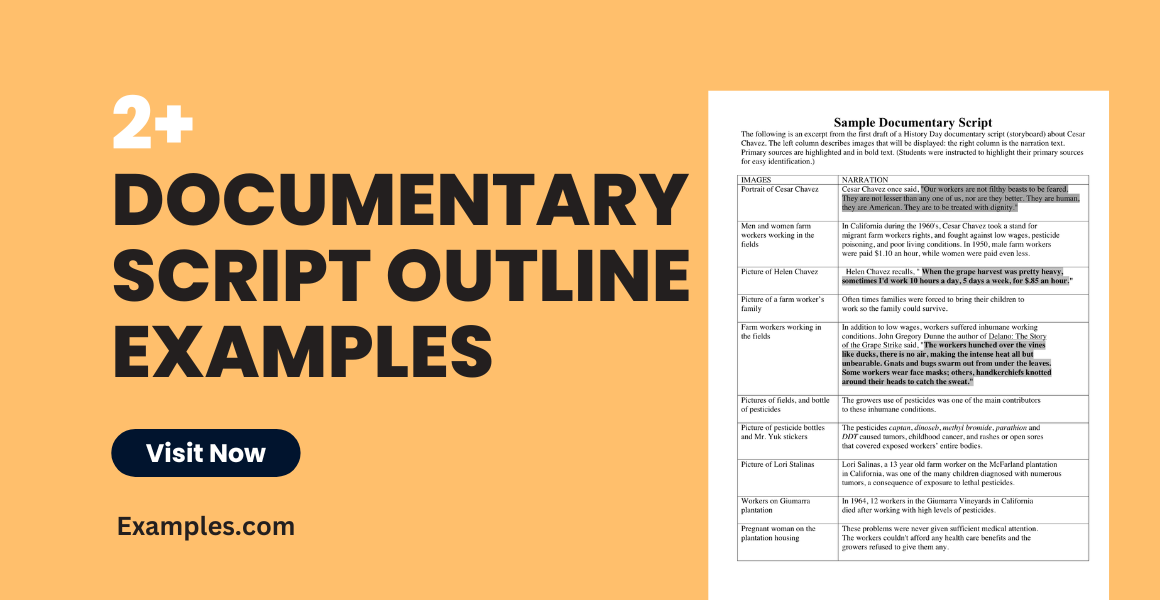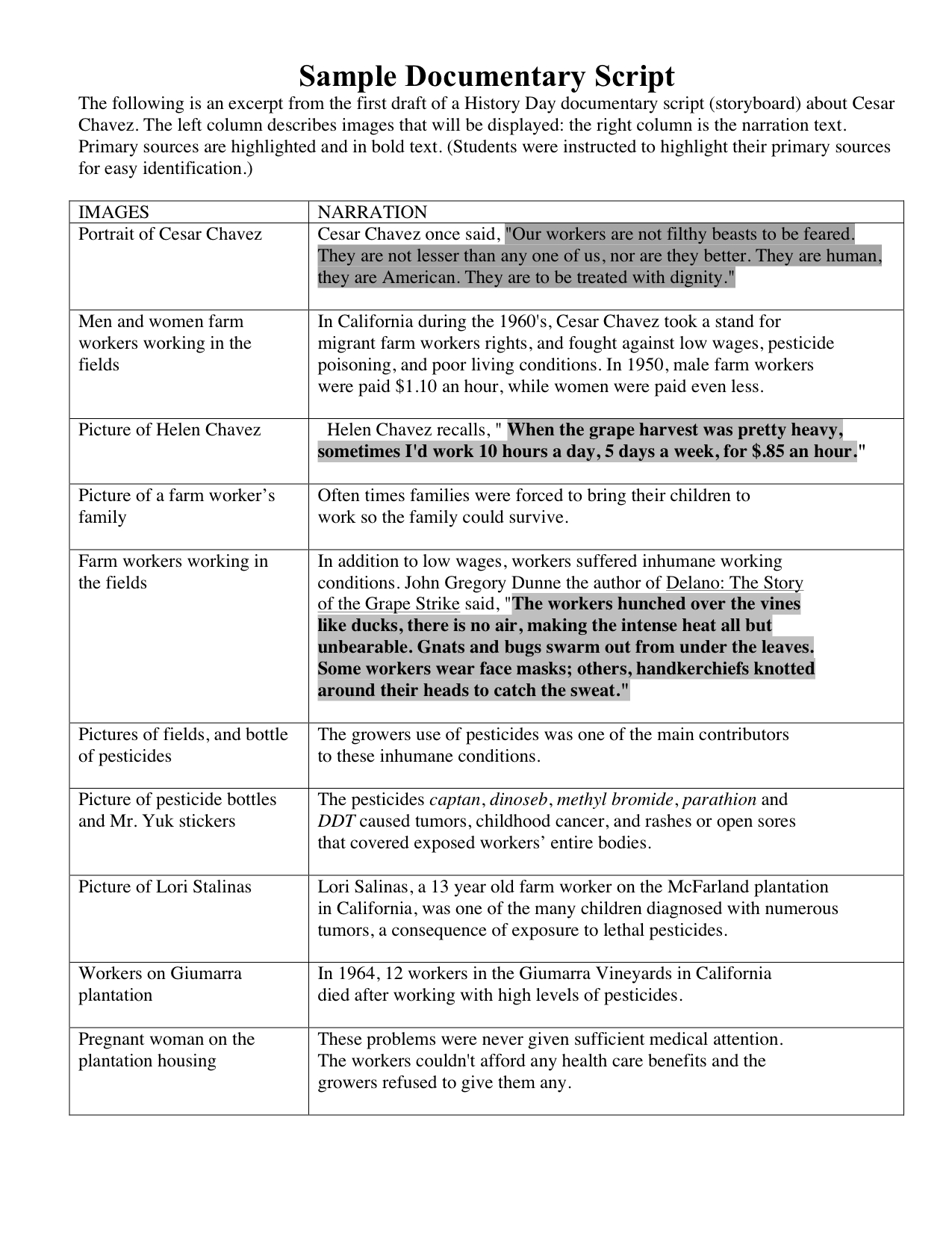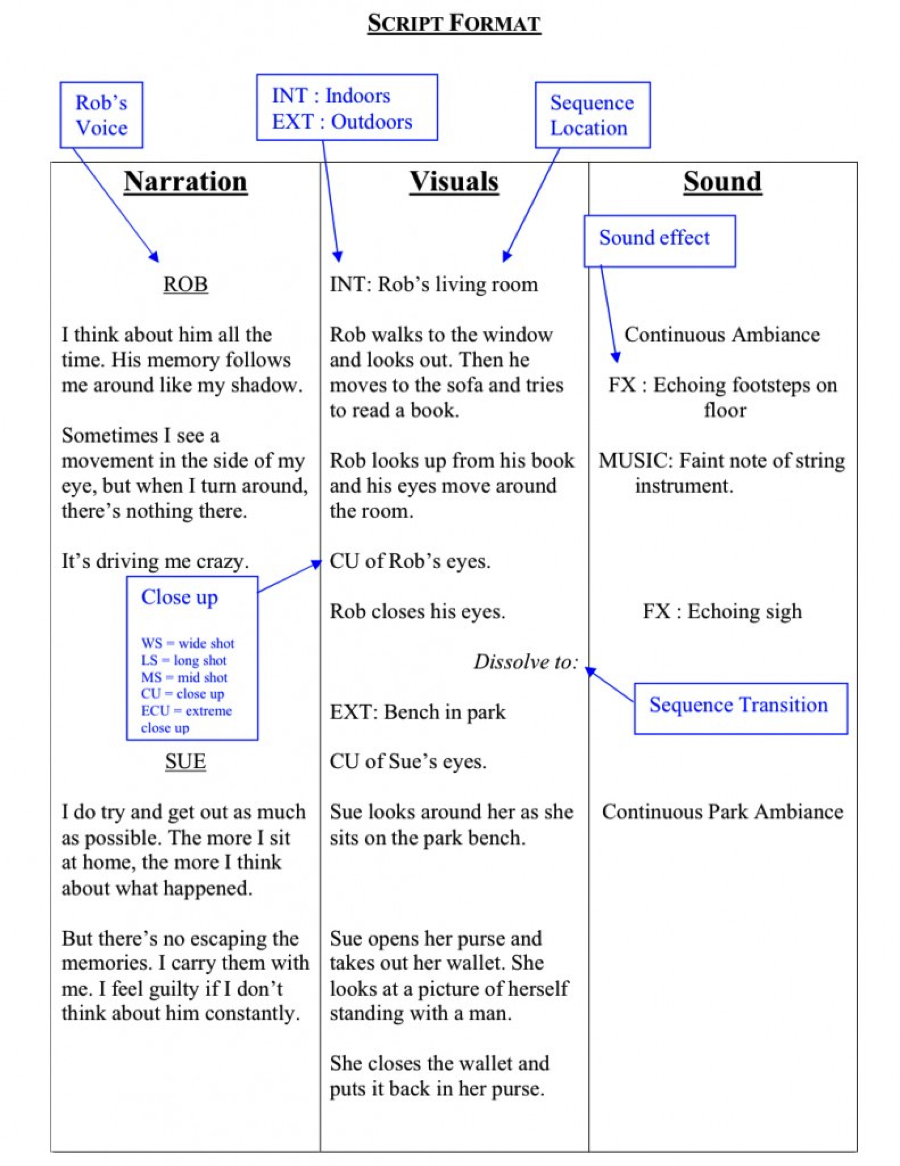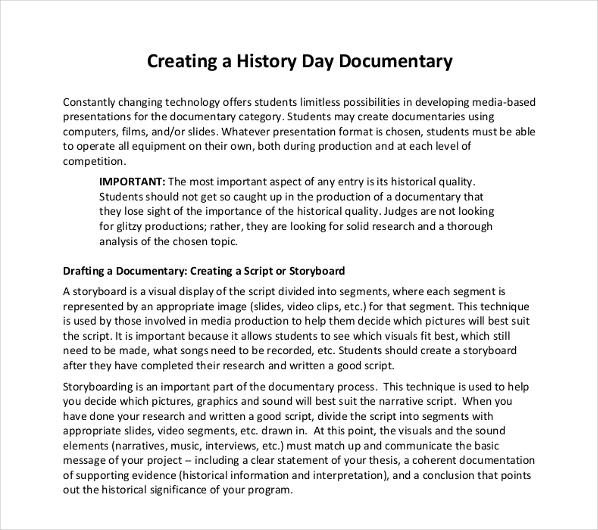Documentary Script Outline Examples to Download
For those of you who are not aware, the Academy Awards, are a set of 24 awards for artistic and technical merit in the American film industry, that are given every year by the Academy of Motion Picture Arts and Sciences (AMPAS), to give credit to excellence in cinematic achievements as judged and assessed by the Academy’s voting membership. Winners of various categories are awarded a copy of a golden statuette, officially called the “Academy Award of Merit”, also known as the “Oscar”. The sculpture was first formed by George Stanley. More than 3,000 Oscars have been given ever since the very first Academy Awards that was first presented in 1929 at the Hollywood Roosevelt Hotel. Confirming his presence once more as the host of the 90th Academy Awards that will be held at the Dolby Theatre in Hollywood, Los Angeles, California at 5:00 p.m. on March 4, 2018 is none other than late night TV show host Jimmy Kimmel. You may also see essay outlines.
One example of a good documentary was O.J.: Made in America that was produced and directed by Ezra Edelman in 2016, that also won the category Best Documentary Feature at the 89th Academy Awards. The documentary explored race and celebrity through the life of O. J. Simpson, from his emerging football career at the University of Southern California and why America fell in love with him, to being accused of murdering Nicole Brown Simpson and Ronald Lyle Goldman, and his subsequent acquittal, and how he was convicted and imprisoned for another crime 13 years later. Even though there are countless of awards that are given annually, they say that receiving an Oscar for any category is rank number 1 and is the greatest honor anyone in the film industry can receive. Today, we will be highlighting a motion picture that is not only simple and sometimes educational, but focuses on true-to-life events that is currently happening in our society, documentaries. You may also see free outlines.

Definition of a Documentary
According to popular hearsay, the word documentary was first coined by Scottish documentary filmmaker John Grierson. His principles of documentary were a cinema’s potential for observing life could be retold in a whole new perspective and with the belief that the “original” actor and “original” scene are better guides than their fiction counterparts when making sense the modern world; and that content “thus taken from the raw” can be more real than the acted one. With this in mind, Grierson’s definition of a documentary as “creative treatment of actuality” has obtained some acceptance, with this position slightly a bit different with that of Soviet film-maker Dziga Vertov’s provocation to present “life as it is” and “life caught unawares”. You may also see program outline.
Overall, making documentaries is the complex process of creating documentary projects that refers to what people do with media devices, content, form, and production strategies in order to address the creative, ethical, and conceptual problems and choices that arise as they make documentaries. You may also see chapter outline.
Documentary filmmaking can be used as a form of journalism, advocacy, or personal expression.
Just like movies, documentaries are nonfictional motion pictures that are intended to record some aspect of reality, primarily for the purposes of instruction, education, or maintaining a historical record. However, the scope of cinematic practices that you can do with documentaries are limited. You may also see biography outline.
Aspects that Documentaries do not have that Movies Do
1. Special Effects. No explosions, no motion capture, no green screen, no set up, no props. Documentaries follow the principle of “what you see is what you get”. The whole point of creating documentaries in the first place is to present an audience with something that is not based from your own imagination and creativity, but to give a glimpse of what the audiences think they know, but are actually seeing something totally different and new at the same time. You may also see thesis outline.
2. Acting. What a sigh of relief huh? No acting involved whatsoever. You have that freedom to say what you want to say on camera without hesitating as to whether you got lines correct or not. But be mindful that documentaries are formal, and that you are expected to be on your best behavior as much as possible. Laugh when you need to, cry when you need to do. Be serious when needed. You may also see book outline examples.
Elements of a Good Documentary
Now that we know what documentaries do not have, let us see what elements are most common in documentaries, as well as to some movies:
1. Interviews. No actors. Nothing is framed. Although, one thing about obtaining interviews is that you need to have their consent first so that they may be aware as to the reason why you are filming and interviewing them in the first place. Secondly, provide them with a guide questionnaire beforehand as to have preparation for the conversation you will be having with the one doing the interview. Conducting interviews is also a way to develop a deeper understanding of the topic coming from an expert in that said field. Frame the person using negative space, have them fill roughly 1/3 of the screen, on the left or right side. You may also see content outline.
2. Cutaways. These are also called as “stand-alone” shots, similar to still photography. Cutaways can range from anything such as store signs, close ups of ashtrays, a clock on the wall, people’s faces, a candle, a shot of a highway. Are you familiar of the saying that a picture says a thousand words? Try your best to squeeze the visual poetry of the shot into the motion picture. With that said, there are three kinds of cutaways namely:
3. Story Telling Cutaways. These cutaways allow the telling of the story without always having to use a narrator. For instance, Welcome signs, street directions, a character entering an exiting a building. You may also see presentation outline.
4. Emotional Cutaways. These are captured moments that have emotional content instilled in them. For example, a man kneeling down and crying over the news of his wife’s passing, or solitary man sitting on a park bench.
5. General Coverage Cutaways Simply called fillers. These are just content that is connected to the event itself. For example, if you are filming a race car contest shots of people watching the race, you might want to include footage of people cheering on for the racers, or perhaps other people eating food. You may also see rough outline.
7. Cinema Verite or Live Action. What you see is what you get. This is the part where you start filming on whatever is going on with the subjects.
8. Process Footage. The part as to where the cameraman begins to film the making of the documentary.
9. Archives. One common thing in documentaries is very old footage. This can actually pertain to anything; from old and torn-up newspapers to a picture of an old book centuries-old. You may also see course outline.
Sample Documentary Script
Allow me to make myself perfectly clear: there is no right or wrong way in making a script. Every writer has their own way on writing (so as long he or she and the director know on how the flow of the documentary or movie should go). But there is always a standard that is followed so that it would be easier for both parties. Below is an example of how a documentary script should be written
Writing the Script
Working backwards is the only way that you can write a documentary. It is only then after you have collected your data and conducted your research that you can write the script. It is a sheer impossibility to even assume on what the interviewee is going to say and how that is going to tie into your message. You can start sitting down and write the script and voice-overs once you have all of the facts and materials.
1. Compel Your Viewer
Just like every good book and form of literature, movies and whatnot, it is dedicated to the listeners, viewers and readers. If not for them, who else would it be for? Countless documentaries have been made about numerous issues over the course of time. It is important for you to actually discover and investigate what story the viewers need to be aware of. Every viewer wants to be transported somewhere else, learn something new, and then be motivated and moved by this information. You may also see report outline examples.
2. Declare Your Point Of View
What story do you want to tell the audience? What do you think they deserve to know? What are the issues that are timely to them? Once you have figured out what message you would want to deliver to your audience, concocting up a script and production together would be easier and it is clearer to the audience regardless of whether or not they agree. And because of that, the audience can be able to connect to your message and allow them to open their eyes to the reality presented to them. At the very least, the audience is given something to think about moving forward. As a director/writer/producer, you have to be flexible and allow your story to unfold even if it’s not in the exact direction you want it to go in the first place. You may also see resume outline.
3. Refine Your Project
Make sure that all technical aspects of your documentary (e.g. the voice-overs, and the writing style) are in order. It may come to a point wherein you will have to rewrite the entire script in order to deliver a more refined message and create more meaning to the audience. Because documentaries are not merely an observation of humanity, but rather an opening door into our nature, into what compels us, what makes us fill with joy and weep with sorrow. And since documentaries involve themselves with the real, they deal with real people and dealing with real issues that are powerful and hit us at our core. Allow your writing reflect those deep, moving messages and capture your audience emotionally. You may also see persuasive speech outline.
Documentary Script Format Example
Introduction to the History Day Documentary Example
Practice makes perfect. In this world, we all have a story to tell. The only difference is that with documentaries, you are willing to tell the stories that actually matter the most to people. You may also see how to outline an essay.





